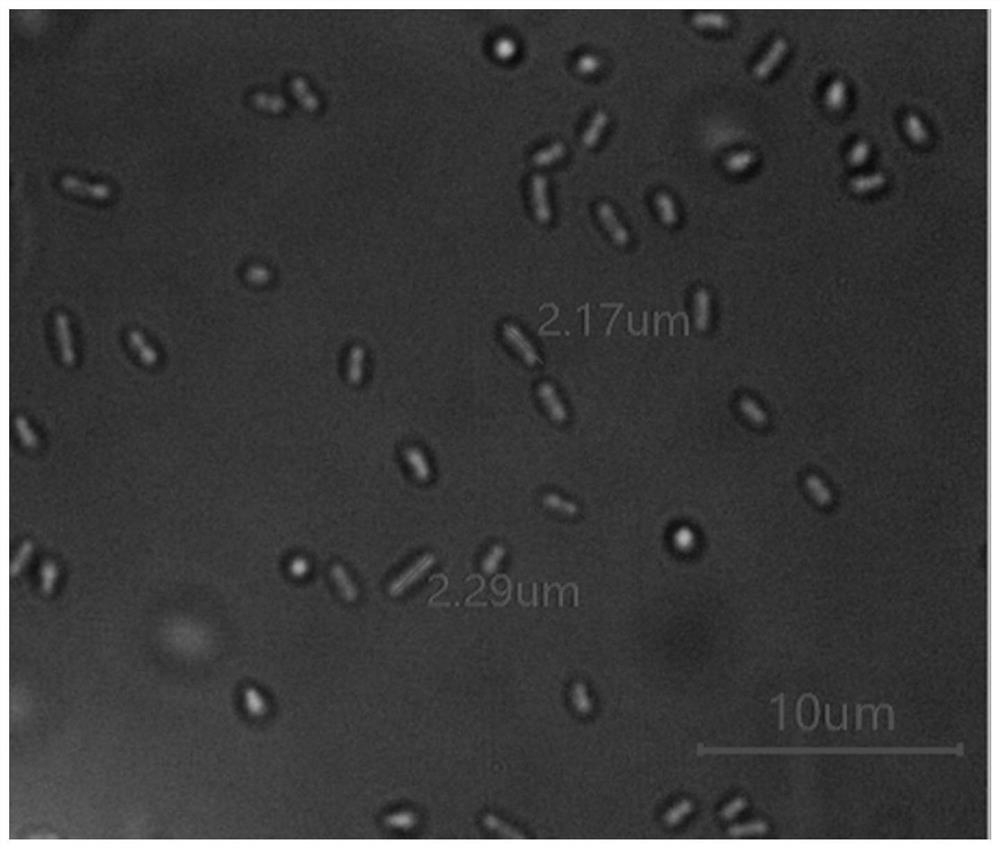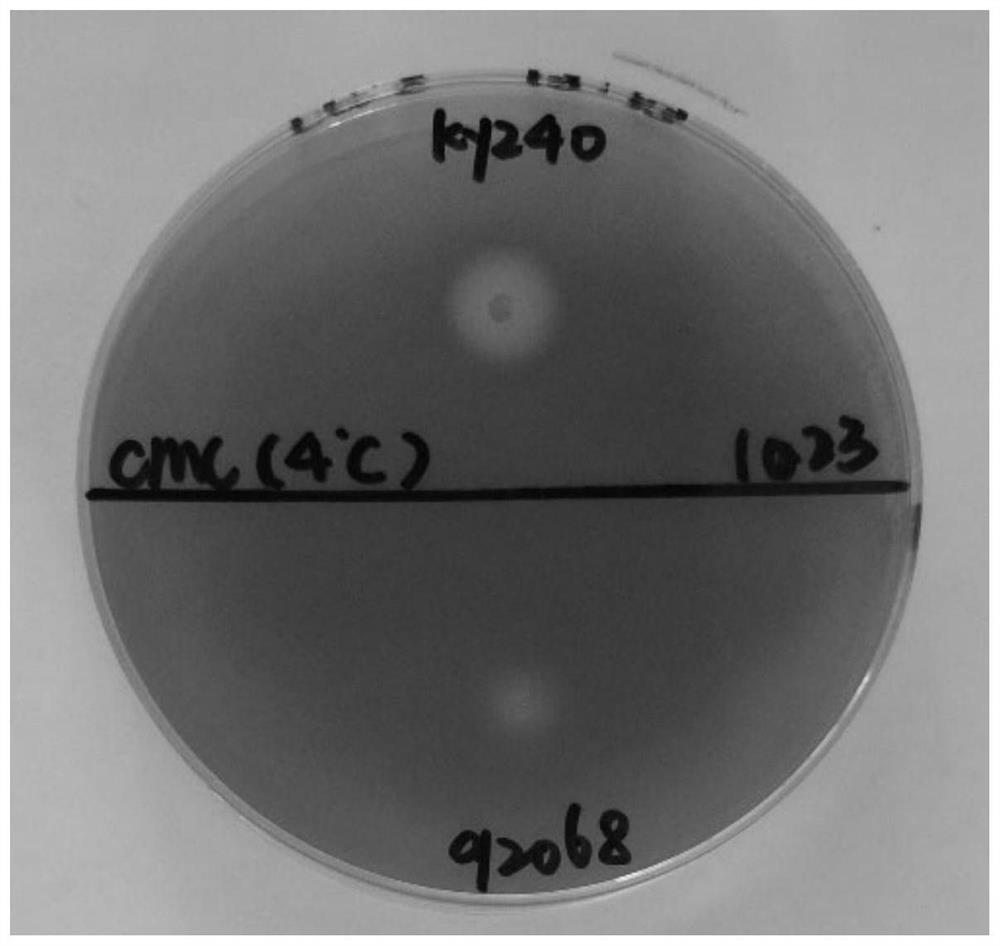A strain of pseudomonas graminis capable of degrading cellulose at low temperature and its application
A cellulose and potassium decomposing technology, applied to a Pseudomonas graminis bacterium capable of degrading cellulose at low temperature and its application field, can solve problems such as limited application range, and achieve the effects of improving soil fertility, promoting effect, and promoting straw maturity
- Summary
- Abstract
- Description
- Claims
- Application Information
AI Technical Summary
Problems solved by technology
Method used
Image
Examples
Embodiment Construction
[0075] The inventor screened a large number of soils from all over the country, and screened out a strain from nearly 300,000 microbial strains that can grow stably and rapidly at a low temperature of 4°C and is relatively stable in reducing cellulose, and can also be used at medium and high temperatures The strain that degrades cellulose is named KY240. In addition, the strain also has the functions of degrading mineral potassium and inorganic phosphorus.
[0076] Determination of 16sDNA of KY240 strain and analysis of strain physiological morphology:
PUM
 Login to View More
Login to View More Abstract
Description
Claims
Application Information
 Login to View More
Login to View More - R&D
- Intellectual Property
- Life Sciences
- Materials
- Tech Scout
- Unparalleled Data Quality
- Higher Quality Content
- 60% Fewer Hallucinations
Browse by: Latest US Patents, China's latest patents, Technical Efficacy Thesaurus, Application Domain, Technology Topic, Popular Technical Reports.
© 2025 PatSnap. All rights reserved.Legal|Privacy policy|Modern Slavery Act Transparency Statement|Sitemap|About US| Contact US: help@patsnap.com



